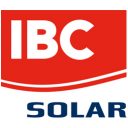Safety risks and solutions in PV systems
Photovoltaic (PV) systems offer a number of benefits, from financial savings to environmental advantages and energy independence. As these benefits are driving PV systems to be installed around the world, the industry has gained a better knowledge of the needs for PV systems’ safety. In general, PV systems are safe, reliable, and do not inherently pose danger to people or property. However, it is important to remember that as long as the sun is up, PV panels and wires are energised with high DC voltages. These high DC voltages can present electrocution risks to installers, maintenance personnel, and firefighters. With this in mind, safety needs to be taken into account during installation, maintenance, and in the event of a fire. For instance, during the installation process, installers connect PV modules that typically have an output voltage of between 30 and 60 V. While the voltage from a single panel is safe, connecting several of these modules serially in a string creates a high voltage which can be dangerous to installers during system installation.
Once modules are connected in a string, the voltage can reach over 1000 VDC. After connecting the strings to an inverter the PV system will operate at these high voltages. This means that while performing standard operation and maintenance functions, such as DC and AC electrical testing or IV curve testing, maintenance personnel can be exposed to these high voltages. While shutting down the main circuit breaker will shut down traditional string inverters, it will not shut down the DC voltage, which will remain high as long as the sun is up.
Fire considerations
Another scenario in which safety is a major concern is in the unlikely event of a fire. Not many fires have been reported so far that involved PV systems, and in most of the reported ones, the PV system was not the cause to the fire. However, when approaching a fire scene with PV system, firefighters must remember that the system is energised as long as the panels are illuminated.
The safety concern is twofold in this situation. The first safety concern is for firefighter safety. In order to ensure their safety, firefighters commonly cut off electric grid supply to burning buildings as a precaution procedure before gaining close access to extinguishing the fire. They assume there is no risk of electrocution once the grid has been disconnected, allowing the spray of water and creation of holes in the roof to allow the emission of smoke and heat. Unfortunately, this assumption is not true in case of a PV roof system, and thus can lead to disasters.
In recent years, in order to ensure their safety, some firefighters have developed a policy of “let it burn” for buildings with PV systems installed. This accounts for the second safety concern: building, assets and business damage. An example of this occurred in Germany when a fire broke out in a warehouse in the town of Hohenasperg.
Fire regulations pertaining to buildings equipped with rooftop PV panels
The existence of a PV system on the warehouse’s roof delayed the firefighting procedures; as the firefighters were required by national firefighting regulations to keep a minimum safe distance from potentially live parts while extinguishing the fire.
In Italy, the restrictions are even stricter, as firefighters are not allowed to extinguish plants under voltage. In the United States, there have even been instances of PV installations being cancelled due to safety concerns.
Due to these safety concerns in combination with evolving PV markets and proliferation of solar energy, safety regulations are being called for by fire authorities, insurance companies, and utility companies around the world. For instance, Germany, a market leader in PV safety requirements implemented VDE-Fire Safety standards that require a DC disconnect mechanism between a solar inverter and a PV generator.
In Austria, the regulations are even stricter. According to OVE R11-1: 2013, depending on the situation a disconnection close to the source (modules) is required. While the United States has also implemented strict safety requirements, such as NEC 2014 Rapid Shutdown, which requires that all PV conductors that are either more than 2 m inside a building or more than 3 m from an array to reach a voltage of 30 V or less (and 240 VA of energy) within 10 s of shutdown (e.g. a fireman pulls the meter from the house).
An effective solution
While it is difficult and expensive to address these safety concerns with traditional string inverters, because they cannot reduce DC voltage even if they are turned off, module-level power electronics, such as power optimisers, act as an effective solution. Power optimisers are electronics connected by installers to each PV module or embedded by module manufacturers replacing the traditional solar junction box. The main function of power optimisers is to increase energy output from PV systems by constantly tracking the maximum power point (MPPT) at the module level.
However, power optimisers also provide enhanced safety. When SolarEdge power optimisers are connected to PV modules, the modules continue in “operation mode” only as long as the signal from the inverter is constantly renewed. In the absence of this signal, power optimisers go into safety mode, shutting down the DC current as well as voltage in both the module and string wires. In safety mode, the output voltage of each module equals 1 V. For example, if firefighters disconnect a PV system from the electrical grid during daylight and the PV system consists of 10 modules per string, the string voltage will decrease to 10 VDC. This means that even if firefighters are unaware of the existence of a PV system, when they disconnect they AC side, then the shutdown at the module-level is initiated.
Traditional firefighter switches
Firefighter switches that are typically applied to standard inverter systems are remote switch disconnectors. A set back with these types of switches is that even after a 0 V measurement following shutdown, there may still be a hazardous voltage in a different location due to a broken wire in between. However, with this solution, by measuring a low voltage (1 V/module), it is possible to ensure that shutdown was performed without any doubt that there is a broken wire. This type technology offers more safety than the previous method.
Another drawback with traditional firefighter switches is that during normal operation it is unclear if the switch is in proper working condition. For example, if the switch is not properly maintained, the switch may not be able to be properly turned off. The company’s power optimisers shutdown is immediately initiated in the case of a fire. This is important because even in lieu of maintenance, firefighter safety is still ensured.
In addition to its embedded functionality, These power optimisers can also limit the amount of time installers spend on the roof. As the power optimisers are permanently connected to the modules, they monitor the performance of each module and communicate performance data to a cloud-based monitoring platform for cost-effective module-level maintenance. Maintenance personnel can perform module-level monitoring and remote troubleshooting on a computer, tablet, or smart phone instead of diagnostics at dangerous heights.
Conclusion
With PV becoming a growing source for our energy needs, the industry is continually striving to improve the safety of these systems. To date, the industry has addressed these concerns by developing increasingly stricter safety standards and relying upon cost-effective, innovative technology. When planning your PV sites, it is important to understand local safety requirements, address the needs of the system owner, and explore available products on the market to meet both of these in order to provide maximum safety.
Original Article
Safety risks and solutions in PV systems
Interested in finding out more Safety risks and solutions in PV systems, and how you can benefit from solar power in your home or business?
You can request a quote/consultation from qualified, pre-approved installers in your area. Simply fill in this form to request a quote/consultation.
18.04.2016 /


